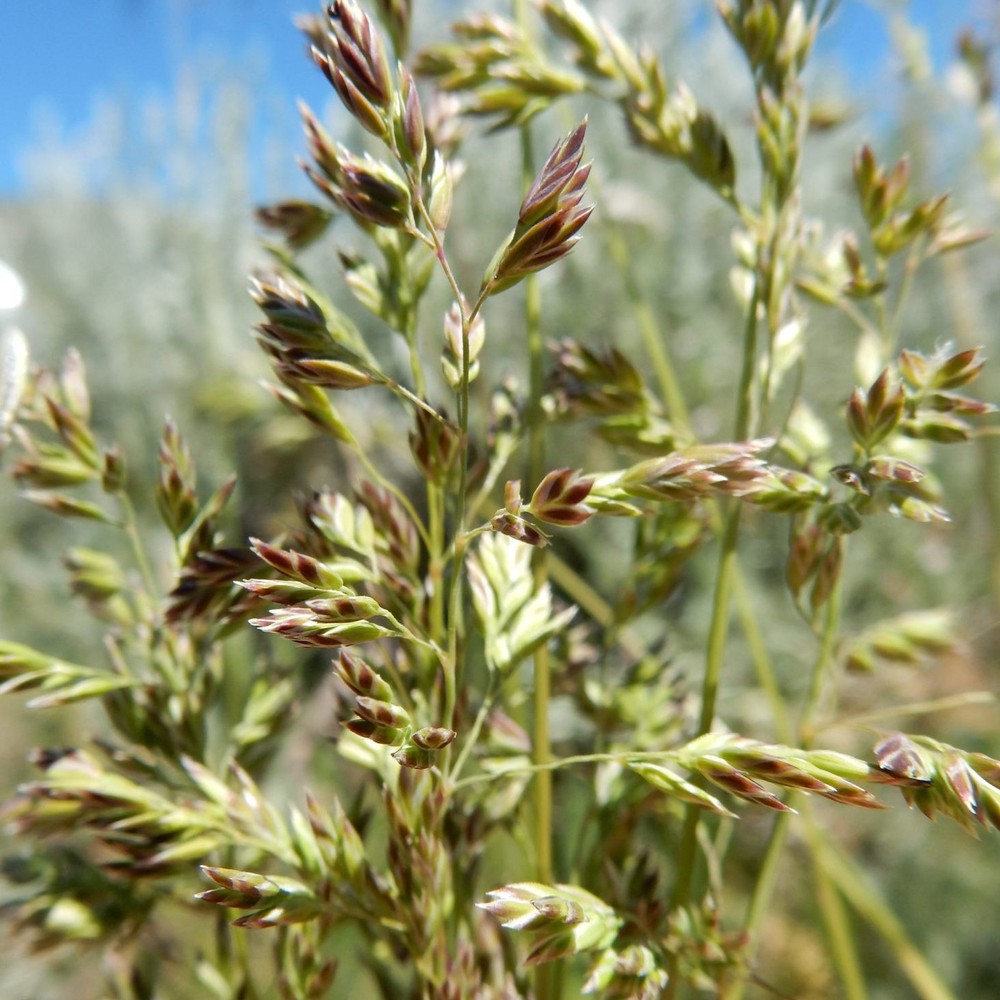Meadow fescue
(Festuca ovina)

Description
Festuca pratensis, the meadow fescue,is a perennial species of grass, which is often used as an ornamental grass in gardens, and is also an important forage crop. It grows in meadows, roadsides, old pastures, and riversides on moist, rich soils, especially on loamy and heavy soils. It is a tall, tufted grass similar to the tall fescue, Festuca arundinacea. Tall fescue differs by having minute hairs on the auricles. It can hybridise with Lolium perenne and Lolium multiflorum. It is a perennial bunchgrass, (i.e. grows in tufts), which grows 30–120 cm (12–47 in), flowering from June until August. The panicles are green to purplish. The spikelets have 5 to 14 flowers. It has a short, blunt ligule compared to other grasses 1 mm high. The leaves are bright green and up to 4 mm across. Festuca (fescue) is a genus of flowering plants belonging to the grass family Poaceae (subfamily Pooideae). They are evergreen or herbaceous perennial tufted grasses with a height range of 10–200 cm (4–79 in) and a cosmopolitan distribution, occurring on every continent except Antarctica. The genus is closely related to ryegrass (Lolium), and recent evidence from phylogenetic studies using DNA sequencing of plant mitochondrial DNA shows that the genus lacks monophyly. As a result, plant taxonomists have moved several species, including the forage grasses tall fescue and meadow fescue, from the genus Festuca into the genus Lolium,or alternatively into the segregate genus Schedonorus. Because the taxonomy is complex, scientists have not determined how many true species belong to the genus, but estimates range from more than 400 to over 640. Fescue pollen is a significant contributor to hay fever.
Taxonomic tree:







